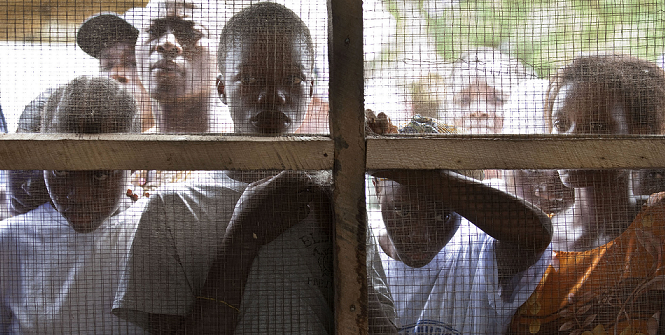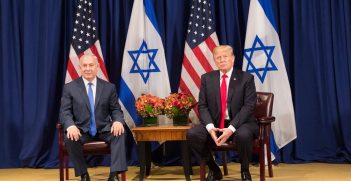Women’s Participation in Peacebuilding: Lessons from the UN

The UN Peacebuilding Commission was the first United Nations body to have the gender dimension explicitly built into its founding resolutions [A/RES/60/180 and S/RES/1645], affirming ‘the important role of women in the prevention and resolution of conflicts’. Despite this, the inclusion of women in peace making and peacebuilding remains limited and largely ad hoc.
The importance of women’s ‘participation and full involvement’ in peacemaking and peacebuilding is shown by a range of research findings regarding the impact of women’s participation in such activities. A recent study concluded that ‘the presence of women significantly improves the influence on negotiation outcomes exercised by all additionally included actors aside from the main parties’. A much-cited study by UN Women undertaken in 2010 and updated in 2012 found, however, that in ‘31 major peace processes between 1992 and 2011 … only 4 percent of signatories, 2.4 percent of chief mediators, 3.7 percent of witnesses and 9 percent of negotiators [were] women’.
The reasons for these multiple forms of exclusion are varied. As noted by Marie O’Reilly, Andrea Ó Súilleabháin, and Thania Paffenholz, much depends on the intended aims of peacemaking interventions: women are not often called to the peace table when the aim is to put in place a ceasefire or peace agreement because they are not often recognised as ‘spoilers’ or belligerents in the conflict, but women obviously have a stake in building lasting peace. There are other barriers to participation as well, however, and the UN is engaged in efforts to overcome technical, ideological and structural impediments to women’s inclusion in peace and security governance through various mechanisms at headquarters level and in country contexts, including through the operations of the Peacebuilding Commission.
I have spent the past three years researching gender and peacebuilding at the United Nations, with a particular, though not exclusive, focus on the Peacebuilding Commission. My findings largely align with the conclusions drawn by the studies cited above. First, there has been a moderate shift over time from the representation of women as vulnerable victims of conflict to women as ‘agents of change’, although women still frequently feature in the documentation alongside children and ‘other vulnerable groups’. Recognising the agency of women in peacebuilding contexts is a necessary precondition for their meaningful inclusion, so the shift in discourse to a representation of women as agents of change is a positive move. There is still a tendency, however, to associate women with youth, vulnerability, and marginalization, which can function to circumscribe the agency attributed in other contexts.
Second, there is an association between women as active economic subjects, and women as agential political subjects, with an assumption that economic empowerment leads to political empowerment. The recent emphasis on women’s economic empowerment as an integral component of peacebuilding-related activity is laudable; ensuring that, for example, women’s land and property rights are respected in the post-conflict environment is essential to transitional justice. It is important, though, to ensure that the kinds of economic activity encouraged and supported by the international community are context-appropriate and do not simply function to unreflexively integrate female “entrepreneurs” into neoliberal modes of production and consumption.
Third, there is sometimes no recognition of gendered dynamics of peacebuilding-related activities in background briefings to the Commission (e.g. on security sector reform, electoral reform, and internal displacement) or recorded in meetings of country-specific configurations. Formal and informal meetings and briefings at Headquarters could take better account of gender as a logic or dynamic, rather than as a synonym for women, ensuring, for example, that discussion of internal displacement or security sector reform include analysis of the gendered dimensions of these issues.
Fourth, and perhaps relatedly, the responsibility for leadership on gender-responsive peacebuilding-related activities seems to be projected onto women’s organisations at country level. The expectation that women’s organisations in peacebuilding contexts can and should take responsibility for raising awareness of or delivering programs related to gender-based violence, national reconciliation or similar aspects of gender-sensitive peacebuilding needs careful negotiation. Of course these entities are likely to have both knowledge and expertise, but it is essential that such initiatives are supported even where the capacity of women’s organisations is constrained.
Building peace is a long-term, complex endeavour, made more complicated by the fact that no one really knows what peacebuilding means. Peacebuilding is related to security, development, peacekeeping, peace-making, economic recovery, judicial reform, transitional justice, disarmament, demobilisation, and reintegration (DDR): peacebuilding might involve each of these things but it is more than the sum of these processes. It is, at heart, a transformative agenda for social change; as one former Chair of the PBC has suggested, ‘peacebuilding is more than a set of activities and tasks to be mandated, undertaken and reviewed. Peacebuilding is rather a “state of mind”- a “culture” in policy-making, planning, funding and implementation of activities in post-conflict settings.
Without the inclusion of women as equal partners in every stage of peace and security governance – ‘in policy-making, planning, funding and implementation’ – the likelihood of creating a sustainable peace is much diminished. There is an emergent consensus among scholars that ‘Only by creating more inclusive policies inviting the participation of women can the UN and governments understand the vital role women carry’. Women’s full and equal participation is essential to foster the seeds of inclusivity, equality and justice that can enable a culture of peace to flourish.
Laura J Shepherd is an Associate Professor of International Relations in the School of Social Sciences at UNSW Australia. Funding for this research was provided by the Australian Research Council (DP130100707). This article may be republished under a Creative Commons License.




